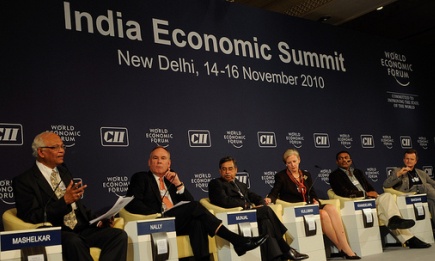Vocational HE to save India

India’s private sector raises alarm that the country’s economyis suffocating from a shortage of qualified workers. In “
Lack of student enrolment and graduatequality
An HR expert writes that “[in India,] the issue of employabilityis centred on two challenges. The first one is lack of access toeducation and skills, and the second is rigour in education qualitystandards. Calculated investment and new technology can take careof the first issue. The second challenge is more about quality ofstudents which results in aspiration mismatch between skills andjob/salary expected.”
Right now, “58% of [Indian] graduates suffer from somedegree of unemployability and formal on-the-job exposure is absent.[Furthermore, the country has a] gross enrolment rate of 11% whilethe world’s average lies at about 22% and those of developedcountries at 54%.”
Distance learning and community colleges
In the past, the government attempted at increasing highereducation access by fostering distance learning through
The authors of “India Labour Report 2012”, also favor thisapproach. It should, however, be complemented by bolsteringvocational universities as well. Here, they refer in particular tothe practice of community colleges in the U.S. and Canada. In thosecountries, community colleges offering practice oriented 2 to 3year degrees cover 45% of all student enrolment.
“India’s higher education challenge lies at the difficulttrinity of enrollment, access and employability. Community collegescould be an important innovation. This mezzanine layer of two-yearprogrammes could increase enrollment by 8 million from small towns,unorganised workers and the traditionally disadvantaged,” ManishSabharwal commented. He is Chairman of TeamLease services, theorganization who created the report together with the IndianInstitute of Job Training.
Regarding India’s polytechnic education institutes, the reportfurthermore criticized the following:
- Non – availability of courses in new and emerging areas.
- Inadequate infrastructure facilities and obsoleteequipment.
- System unable to attract quality teachers
- Inadequate financial resources
- Inadequate or non-existence of state policies for training andretraining of faculty and staff
- Lack of flexibility and autonomy to the institutions
- Inadequate industry institute participation
- Lack of Research and Development in technician education
- Antiquated Curricula
Meest Gelezen
Vrouwen houden universiteit draaiende, maar krijgen daarvoor geen waardering
Hbo-docent wil wel rolmodel zijn, maar niet eigen moreel kompas opdringen
Wederom intimidatie van journalisten door universiteit, nu in Delft
‘Waarom het nu niet lukt om medezeggenschap in hbo te versterken’
‘Sluijsmans et al. slaan de plank volledig mis’

